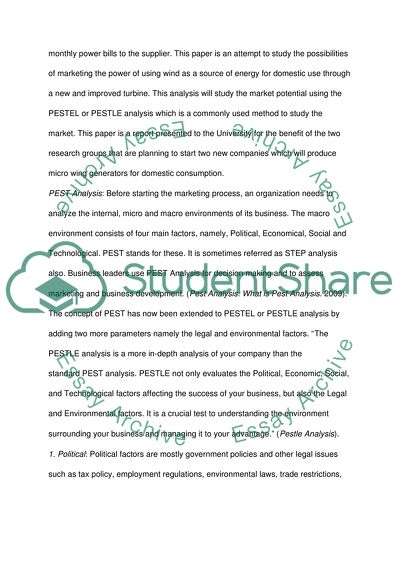Cite this document
(Domestic Power Generation Using Wind Turbines in Homes Research Paper, n.d.)
Domestic Power Generation Using Wind Turbines in Homes Research Paper. Retrieved from https://studentshare.org/technology/1721405-pestel-analysis-a-new-type-of-wind-turbine-that-can-generate-electricity-for-domestic-use
Domestic Power Generation Using Wind Turbines in Homes Research Paper. Retrieved from https://studentshare.org/technology/1721405-pestel-analysis-a-new-type-of-wind-turbine-that-can-generate-electricity-for-domestic-use
(Domestic Power Generation Using Wind Turbines in Homes Research Paper)
Domestic Power Generation Using Wind Turbines in Homes Research Paper. https://studentshare.org/technology/1721405-pestel-analysis-a-new-type-of-wind-turbine-that-can-generate-electricity-for-domestic-use.
Domestic Power Generation Using Wind Turbines in Homes Research Paper. https://studentshare.org/technology/1721405-pestel-analysis-a-new-type-of-wind-turbine-that-can-generate-electricity-for-domestic-use.
“Domestic Power Generation Using Wind Turbines in Homes Research Paper”, n.d. https://studentshare.org/technology/1721405-pestel-analysis-a-new-type-of-wind-turbine-that-can-generate-electricity-for-domestic-use.


